
Mariah Obiedzinski Tang
April 3, 2025

AI tools such as ChatGPT, Gemini, and Perplexity scour the web for existing content that fulfills users’ specific prompt criteria then collates it into a response. Sites that have strong search engine optimization (SEO)—those that answer specific user questions, are properly structured for conversion, and provide reliable and authoritative content—are more likely to turn up in AI search results.
AI searches your content like a database. The way your site is structured to present content (through SEO, file structure, and tagging) already influences your findability. Building and maintaining a strong foundation will become increasingly important as all search tools become more precise and intuitive.
AI has been working behind the scenes of search for years, and now users get to guide that technology firsthand using AI search tools. While ChatGPT gets 14 billion prompts daily, just 37.5 million are search-related, according to SparkToro, and 70% of prompts are actions such as generating text drafts or writing code.
Compare that to Google’s 17 billion searches a day—and its 21% growth in search volume from 2023-24—and it’s safe to say that SEO-rich content strategy is more important now than ever.
Here are some SEO best practices and action steps to help more people find your content and convert with your brand, no matter where they search.
Fact: Research shows that more detailed and specific prompts generate better AI results. Large language models such as ChatGPT and Gemini are built to process complex prompts, and the AI Mode built into Google search is starting to deliver on more complicated queries.
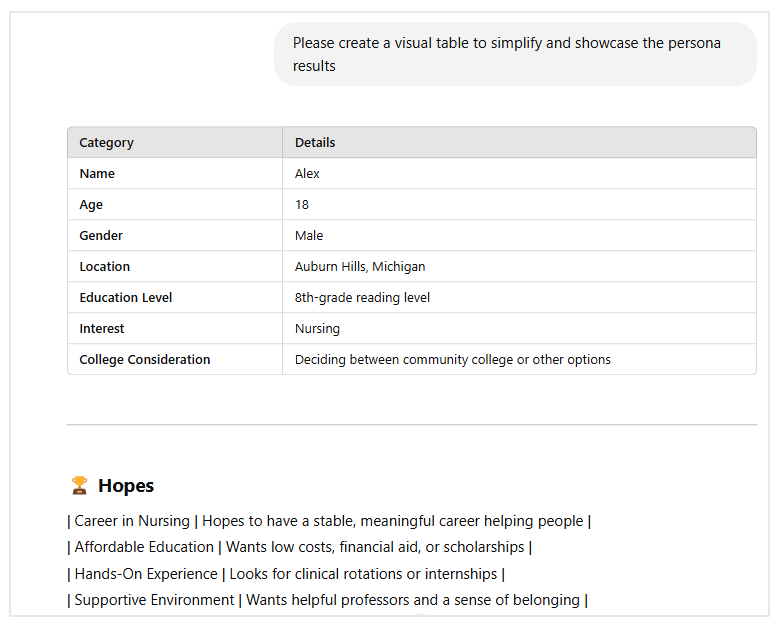
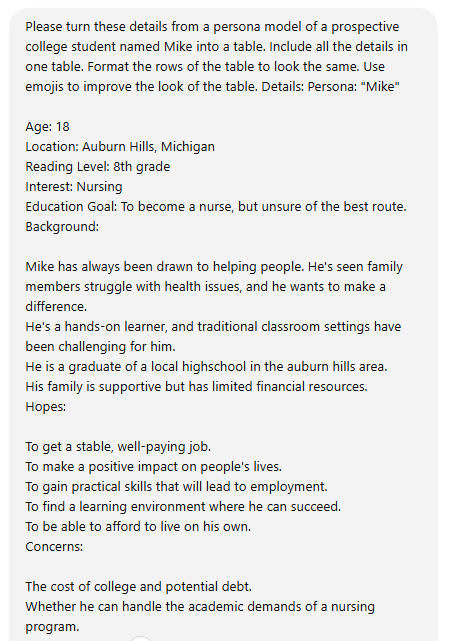
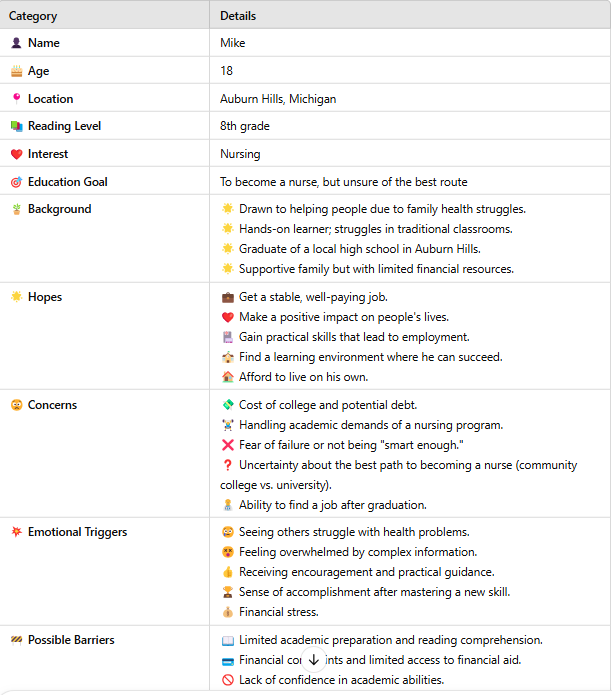
What you can do: Optimize your content to thoroughly answer specific questions in your unique brand voice:
Get really good at writing your own AI prompts. Run yourself through drills of what a novice user, intermediate user, or advanced user might instruct the AI tool or search platform to do. Then derive questions from each output to answer within your content.
SEO expert Andy Crestodina recommends including low-volume and niche search phrases in your stories. Answering those questions naturally includes phrasing that fulfills general, higher-volume, and more competitive search queries.
Blogs, videos, FAQ sections, and podcasts are perfect for answering questions. Distribute these stories on social media, email, and text, and make sure each story includes an appropriate next step that matches the user’s search.
Fact: Decades of user testing show that when searchers get frustrated or can’t find what they need, they bounce. Similarly, Google and AI tools are designed to deliver on the searcher’s intended purpose. The job of your content is to quickly answer questions and help people convert. If it doesn’t, your content is less likely to show up in search results.
What you can do: Run a content audit to gauge how easily users can accomplish their goals. Then optimize your pages to reorder content, add practical calls-to-action, and add links to related content in areas where next steps are unclear.
Example: Stamats audits content for institutions across the U.S., and those that make intentional updates typically see an increase in conversions. Structuring pages that are scannable and that answer users’ questions gave Oakland Community College a content performance boost:
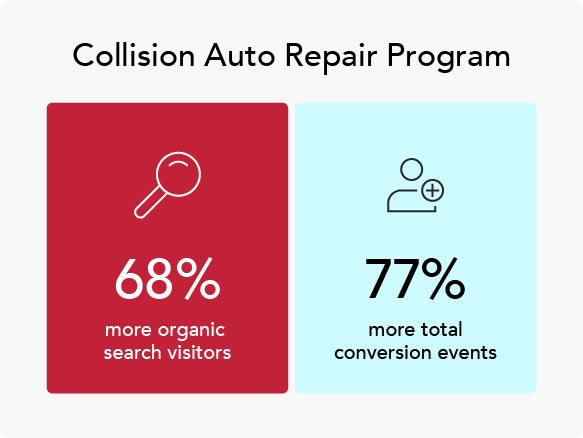
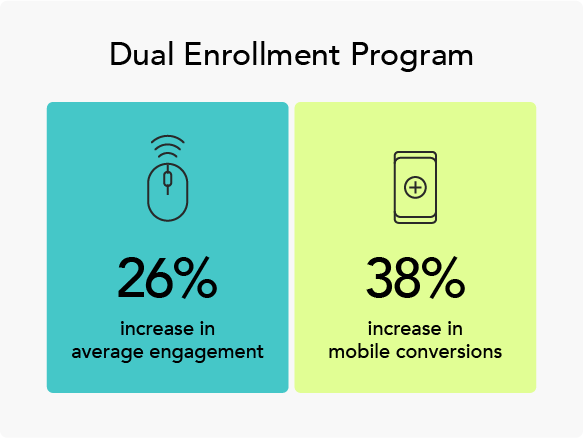
Fact: Schema markup is a system of HTML tags on your website that helps search engines find, understand, and surface your content. As BlueHost explains, these tags tell search engines and AI tools what type of content you have (blog stories, service pages, etc.) and what your content is about (your services and the knowledge you have to share).
What you can do: Work with a professional services team to implement schema markup across your site, set benchmarks, and track results. There are different types of markup for different types of content, and classifying the appropriate markup will help streamline the flow of users from search to your site.
On-page structure also supports the user experience side of SEO. Use scannable, relevant subheadings and ensure the content on your site loads quickly—for example, photo files that are too big can slow down the site and frustrate the user.
Related reading: ‘Do You Do SEO?’ We Do, and You Should Too
Fact: Originality, authenticity, ability to answer questions thoroughly, and trustability factor in to surfacing high on Google as noted in its March 2025 update. And the same is proving true for getting found through AI tools like ChatGPT.
What you can do: In other words, create content by humans, for humans. Dive deep into topics of interest, and layer in your subject matter experts’ unique perspective. Stories that tap into human emotion and differentiators are a key element in the decision-making process, so paint a picture in your brand color that only a human can generate.
In higher ed, that means meeting with students and faculty to get their original take on a new program, facility, or event. In health care, it means interviewing providers and patients to learn the real impacts and implications of new technologies, procedures, and structures of care. AI can’t meet with a family whose lives were disrupted by two spinal cord injuries and tell their story in a personal way (at least not yet).
That doesn’t mean you can’t use AI in your content creation. In fact, you should use it to reduce the weight of administrative tasks such as collating research, starting outlines, and generating different perspectives. Try these marketing prompts and public custom GPT resources from AI consultant and higher ed content expert Brian Piper. Just remember: The information AI delivers is a collation of content that already exists—it is neither new nor original. It is a starting point, not a completed work.
Example: UT Southwestern published a blog story about an innovation in personalized ultra-fractionated stereotactic adaptive radiotherapy (PULSAR). Written for patients and featuring quotes from a prominent physician, it was the only article in top Google search results that wasn’t a medical journal article (at the time of publishing). Shortly after publication, it ranked No. 2 in Google search results for a general query on PULSAR and won the AI snippet.
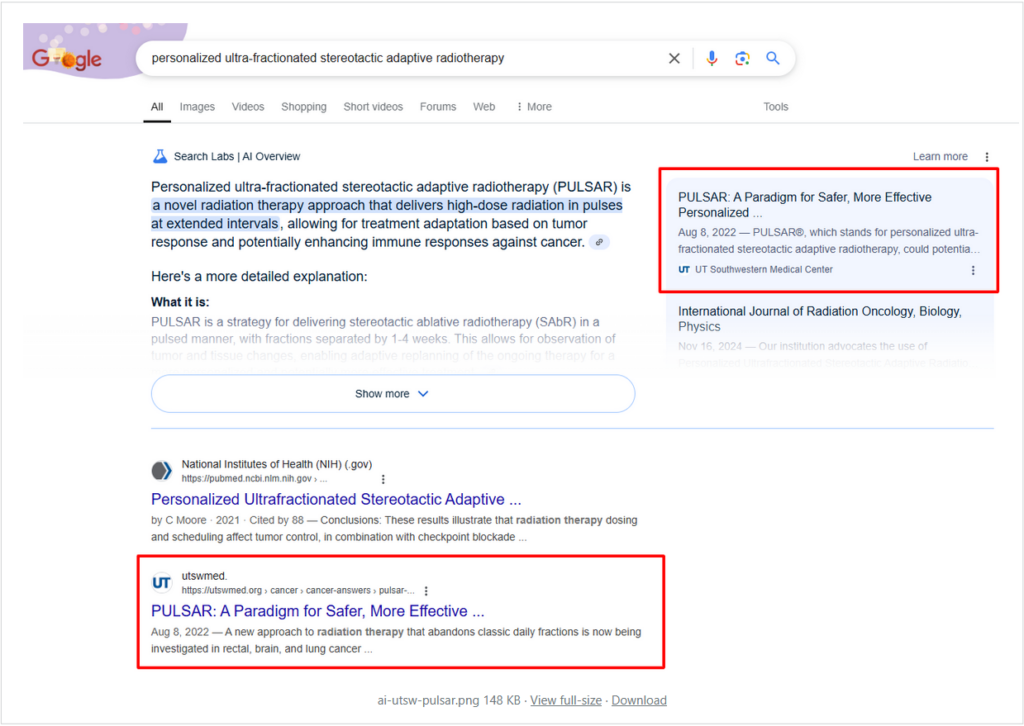
Fact: You sang that subheading to yourself. Another fact: SEO is not a one-and-done project. It’s ongoing, especially in times of rapid change like we’re in now.
What you can do: Audit your content to understand what opportunities exist on your site. Watch trends in search and update existing content before jumping into making something new: How can you make that content better or more timely?
Update the timestamp of content you optimize, if applicable, to indicate to users and search platforms that the data are fresh. Any time you make a change, follow up to see how it affected your conversions, page user experience, and overall traffic. Use your data insights to prioritize the next round of optimizations.
AI tools generally draw from the same pool of information—the web. The difference in search results, just like with traditional search platforms, is the style and precision of the output.
Whether your users are finding you through AI tools, Google, or another search entry point, your site’s job is to deliver helpful, conversion-centric content that answers their questions. Remember, the goal of SEO is not just to get more organic traffic—it’s to earn meaningful conversions.